Over 140 Years of Memories: Ten Things You May Not Have Known About REAL
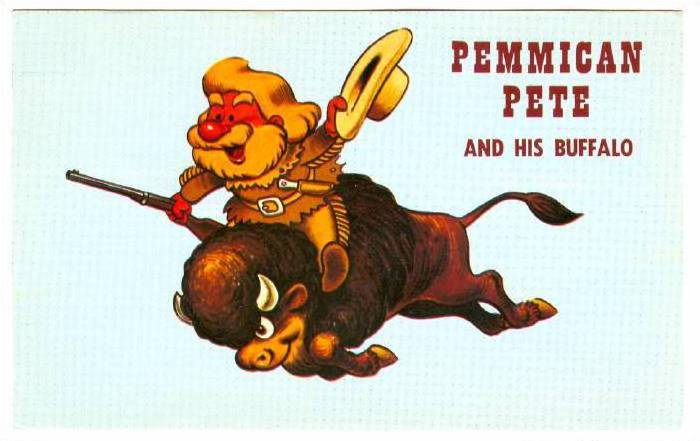
Thousands of Memories and Ten You May Have Forgotten
1 – Confederation Park
After more than 140 years of welcoming the world, there are sure to be some events and happenings that have created memories, stirred emotions, and are the pillars that hold up the tradition of REAL and propel us into the future.
REAL’s history includes just about all you can imagine, fires, riots, movies, sports, and a legendary watering hole.
We start with one of the oldest parks in Regina, Confederation Park.
The park, located right beside Mosaic Stadium, was built in 1927. It’s complete with a renewed fountain, benches, and trees. It’s a tranquil location to enjoy your lunch, read a book, or enjoy a Queen City Exhibition concert.
In the early 70’s, the Association decided to get the youth to put “its efforts where its mouth was”. The Associations Youth Council was given control of the worn-down and tired Confederation Building in Confederation Park. The mission was to make it attractive and vibrant in time for the Buffalo Days Exhibition. Programs were generated for youth after a “paint-in” that included arts, drama, and more activities.
In 2017 the park underwent a $2M facelift which also returned the fountain to its original state. Part of the rejuvenation saw decorative panels created that tell the story of Regina’s role in Confederation. Each panel shares the stories in Cree.
Confederation Park is used for numerous events, including the Rider’s Party in the Park, Queen City Ex concerts, kids’ camps, and more.
SaskPower was a large supporter of the revitalization of Confederation Park. With the installation of state-of-the-art lighting, the park REAL can show support for charities and events by lighting the park in the cause’s colours. The park has been lit red, blue, orange, and more.
It’s been designed as a gathering space for the community for generations to come.
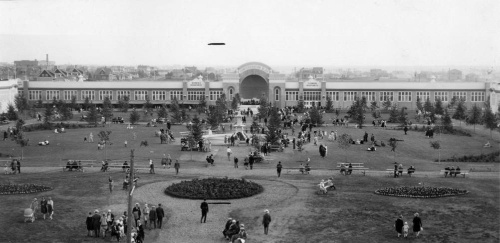
2 – The Saskatchewan Roughriders and Mosaic Stadium: back where it started
Rider Pride runs deep in Saskatchewan. And it has for decades. “Bleed Green” is a common phrase amongst the fans and in fact, know nationwide in the Canadian Football League (CFL).
The Riders weren’t always a football team, though. In 1910 the team was established as the Regina Rugby Club with the intention of being a rowing club. It wasn’t long before three-down football made its way into the province. In 1924 they became the Roughriders and Rider Nation was born.
Long before the failed expansion into the United States by the CFL, the Riders played a couple games against a team from Minot, North Dakota at the Regina Exhibition Grounds. The first of two games took place in 1933, and they played with have American rules and half Canadian rules. The Riders won 10-7. An exhibition game held in Minot later saw the Riders lose 20-13.
The Riders eventually moved to Taylor Field but came back to the exhibition grounds decades later.
The current Mosaic Stadium, which is part of the REAL District, continues the Rider legacy that began at Park Hughes—the site of the first home of the Regina Rugby Club. Park Hughes was where the current stadium sits. In 1921, the team played its inaugural game on that very ground, and over the decades, the community rallied behind the team, shaping it into more than just a football club. The Riders became a symbol of pride for the entire province, as generations of fans turned out to support their team through both triumph and challenge.
Interestingly, this land could have had a very different history and look. In 1913, John Marshall Young purchased the area with the intent of it being the site of the provincial legislature. However, thanks to realtor Walter Hill, the government chose another location—what is now the current home of the Saskatchewan Legislative Building at Wascana Lake. This decision allowed the Roughriders to remain in their home and the stadium and grounds became an ever-growing symbol of community resilience and passion.
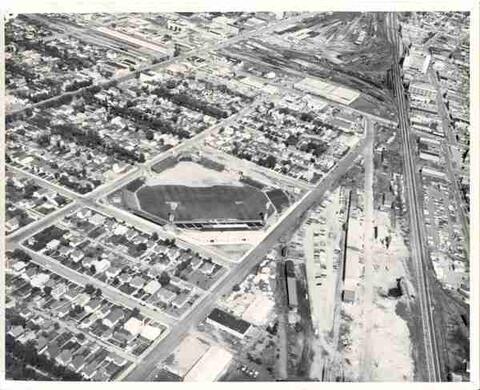
3 – Success Can Mean Growth, Expansion, and Moving
Established in 1884 as the Assiniboia Agricultural Association, our roots run deep, intertwining with the very fabric of Regina’s identity. The fair, in all of its forms, is a highly anticipated event held annually at REAL. But it hasn’t always been at that location.
The Assiniboia Agricultural Society organized Regina’s first agricultural fair, held near today’s Victoria Park. In 1895 the first major agricultural exhibition held on the grounds was the Canadian North-West Territorial Exhibition. It represented the entire Northwest Territories, which later became Alberta and Saskatchewan. It ran from July 30-August 7, 1895 and moved to its present site at the REAL District.
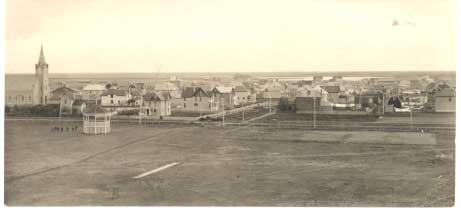
4 – World Grain Conference and Exhibition
In 1933 the World’s Grain Exhibition and Conference took place at the Regina Exhibition Grounds.
Originally planned for 1932, the Conference took place from July 24 to August 5 of 1933 to run at the same time as the annual Regina Fair. The Fair was touted as “The finest ever brought to Canada with 40 railroad cars packed with amusement and thrills.” Performers from around the world thrill those in attendance.
The move came because of anxiety surrounding the Great Depression and falling grain prices. In October of 1931, a resolution before Regina City Council stated it was, “Opposing any movement regarding the cancellation or postponement of the World’s Grain Exhibition and Conference” and plans went ahead to have the Conference in 1933.
“The Greatest Cash Prize List Ever Offered” were announced for the show. Over $200,000.00 (around $4.5M in 2025 value) were announced for the show’s grain competitions. Plans also included the construction of show building of 160,000 square feet costing in excess of $240,000.00 ($5.4M in 2025 value). The construction of the Grain Show Building became a way to ease the unemployment being experienced during the Depression. Sadly, the building was virtually destroyed by fire in 1955 and never rebuilt.
Invitations to attend were sent around the world with confirmed participants from Peru, Guatemala, New Zealand, Belgium, Italy, Netherlands, Poland, Yugoslavia, Czecho-Slovakia, the United Kingdom, Siam, Chile, the Philippine Islands, South Africa, France, United States, Switzerland, Australia, and several provinces of India.
Once the event was finished, the Regina Leader Post reported a total attendance at the Fair and Exhibition exceeded 214,000 persons.
The Conference wasn’t just about the Fair and the Grain Exhibition, but art was a predominant feature through the event.
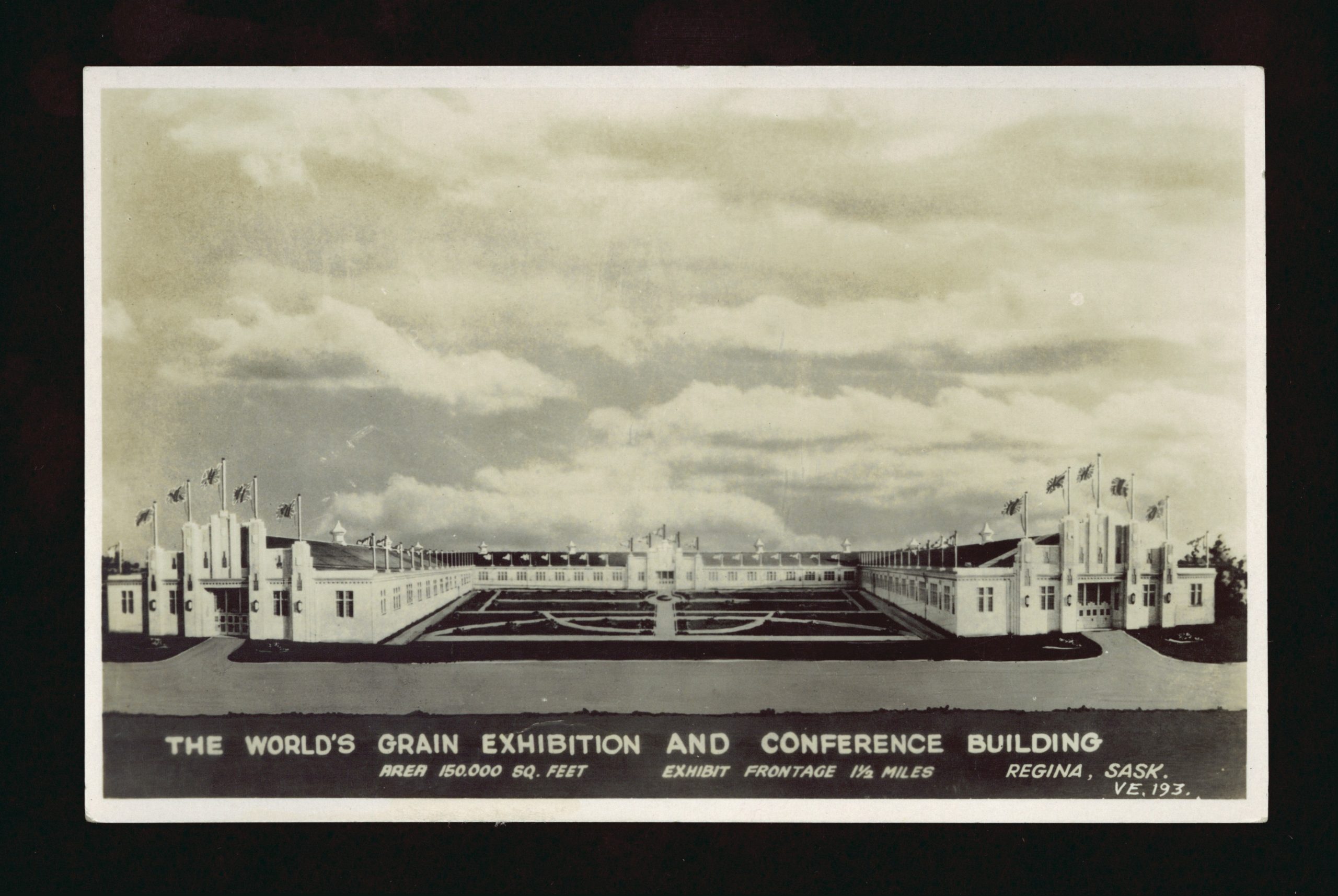
5 – The Brandtner Murals
While the World Grain Conference and Exhibition was focused on agriculture, the arts were also predominantly featured as well.
World renowned artist Fritz Brandtner had created several murals which hung within the Grain Show Building and survived the 1955 fire.
The murals adorned the walls of the building and are 4 feet tall and range in length up to 90 feet.
Currently, the murals are on display through REAL. You can see some in Banner Hall when you attend the Farmer’s Market. Plans are in the works to make the murals more visible to visitors and move them within the Viterra International Trade Centre.
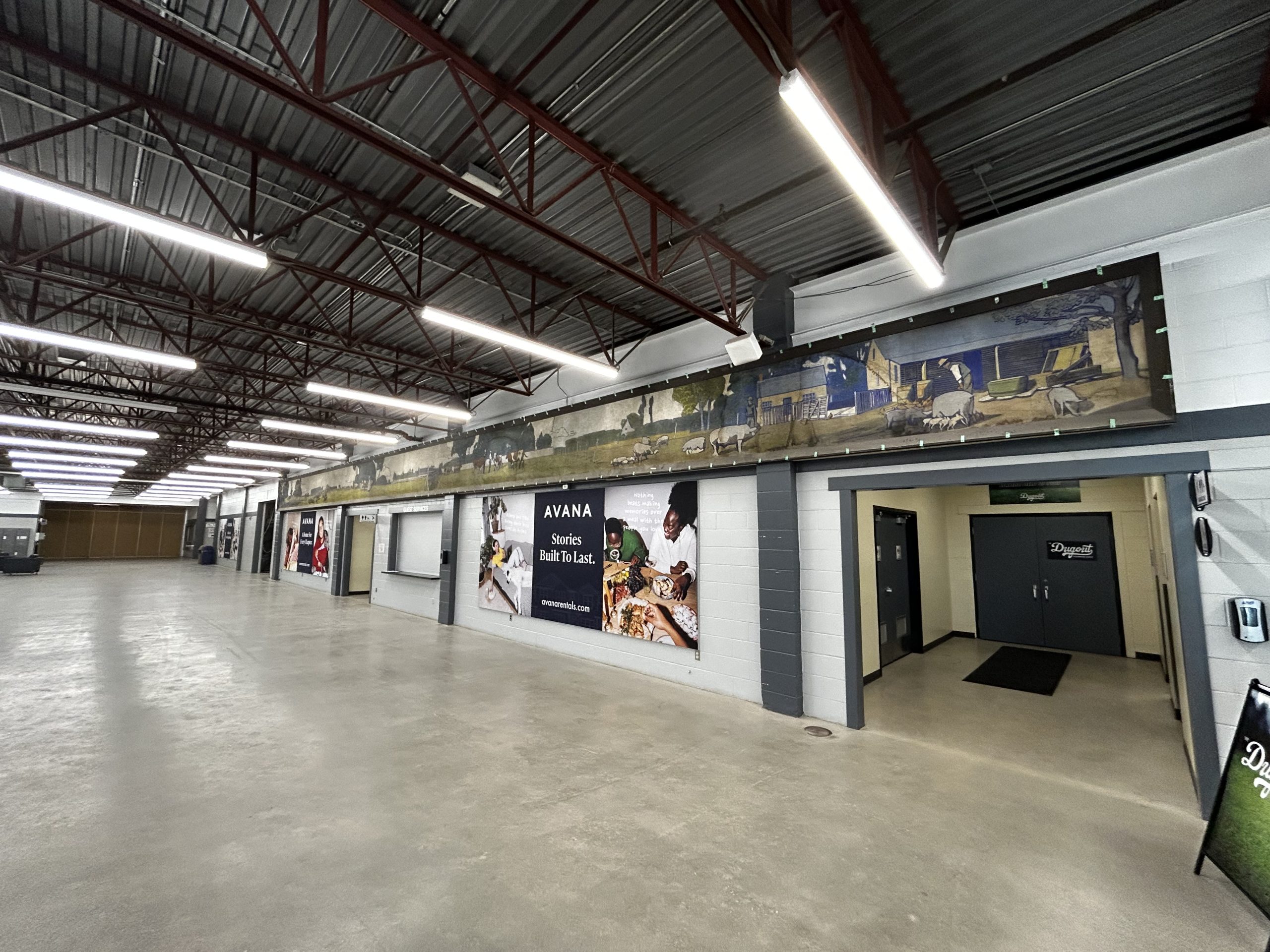
6 – A Changing Footprint
Sometimes the footprint changes because it’s planned, but sometimes there are other factors that are unplanned that force a facility to make other plans.
In 1917, with the annual fair in full swing with large crowds, the Grandstand on the Exhibition Grounds caught on fire and was destroyed along with several other buildings. Despite many visitors, no one was hurt in the blaze.
The grandstand was rebuilt and featured many activities on site, including concerts from Tanya Tucker, Dr. Hook & the Medicine Show, The Stampeders, Paul Revere & the Raiders, Kim Mitchell, and many more.
Part of the change and growth centred around where the Viterra International Trade Centre sits. A racetrack existed on-site and operated from 1907 to 1968 with some breaks during World War I and II. Queensbury Downs was a half mile track was the site of harness and horse racing and some stock car racing. The track was closed in 2002 with new buildings added and the remaining facilities rebranded as the Queensbury Convention Centre.
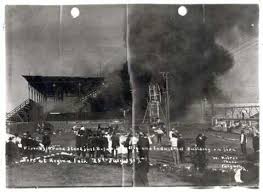
7 – Territorial Exhibition, Buffalo Days, and the Queen City Ex
What we know today as the Queen City Ex has had a variety of names and changes over it’s more than 140 years.
It was originally known as the Regina Fair or the Regina Agricultural Exhibition, but in 1895 became a major event.
In 1895 the first major agricultural exhibition held on the grounds was the Canadian North-West Territorial Exhibition. It represented the entire Northwest Territories, which later became Alberta and Saskatchewan. It ran from July 30-August 7, 1895.
Other names the fair has been known as is The Weed Fair, the Dominion Exhibition, and The World Grain Exhibition and Conference. Each name was for a year and went back to the Regina Exhibition until 1967. That’s when it was renamed Buffalo Days. It featured Pemmican Pete, Pemmican Pearl, The Rowdy Gang, and much more.
Buffalo Days remained until a rebrand in 2009. The fair became known as the Queen City Ex and continues to be a gathering place for families to come and experience entertainment, rides, food, and create thousands of memories.
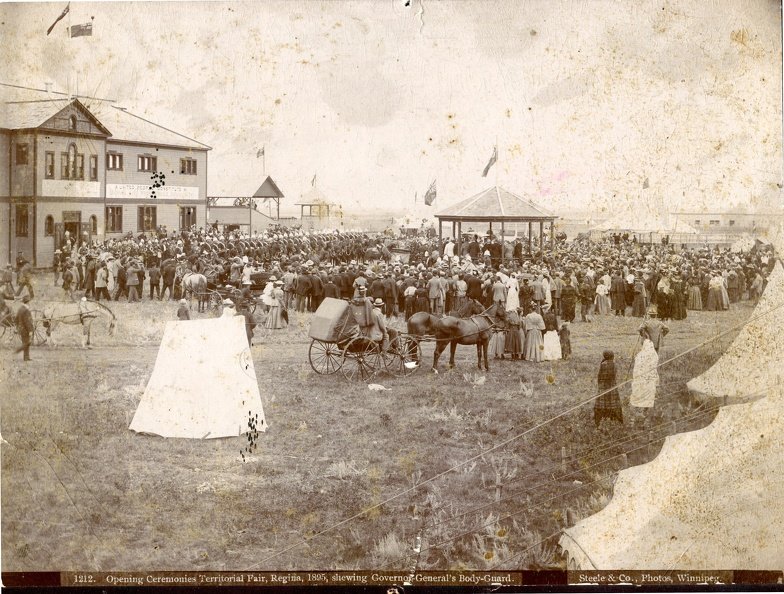
8 – Regina Exhibition Stadium
Built in 1919, it went by a few names; Regina Stadium and Queen City Gardens.
When it opened on December 10, 1919, the debut event was a skating exhibition which featured Minnesota skaters Lillian Egan and Ann Munkholm. Once the pair finished, the ice filled with 600 people skating to a musical performance by the Great War Veterans Band on December 10, 1919.
At the time, Regina Exhibition Stadium was considered ‘mammoth’ by the day’s standards, being the largest arena west of Winnipeg. It was home to the Regina Pats of the Western Hockey League until the Agridome was built in 1977.
But it wasn’t just a sports venue. It was home to a wide variety of events.
The arena was the largest facility in the city that could accommodate large-crowd events, sometimes hitting a mass of 7000 people. Events included a world Boy Scout rally, winter carnivals, and sportsmen shows.
Other large-scale events included the RCMP Musical Ride, concerts like Louis Armstrong, the Beach Boys, Aerosmith, and more.
Despite its age and the Pats moving to the Agridome, the stadium continued to host events including Canadian Western Agribition and the legendary ‘Swamp.’ More on that later.
The stadium was demolished in 2017 to make way for the International Trade Centre, but the year before it came down, a rom-com was filmed inside.
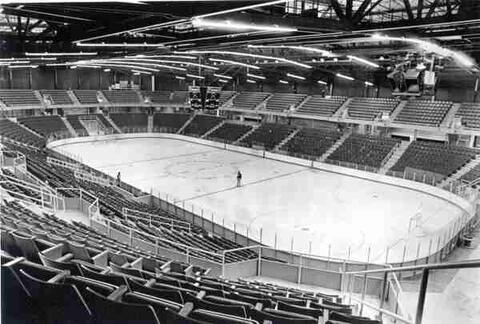
9 – Chokeslam
With the demolition of the Stadium in the works the building was still being used. Canadian Western Agribition used it for their annual show in November and the location seemed like a great place to film a movie with an unusual storyline.
In 2016, “Chokeslam,” a romantic comedy which centered around professional wrestling was filmed in the Exhibition Stadium. The movie premiered at the Calgary International Film Festival and starred Saskatchewan born Micheal Eklund and legendary WWE wrestler, Mick Foley.
The production involved many local residents as crew and extras.
Jason Hunt worked as a location specialist for the film says “it was very interesting to work in there. Typical old building but just knowing the history behind all of it was a pleasure to work there.” One memory stands out for Hunt, “looking at the arena from the floor imagining professional wrestlers used to come here all the time and no heat there at night it kind of got a little cold.”
Deanna Kirkpatrick and her kids answered the call as extras.
“I have fond memories of being an extra in the stadium scenes of ‘Chokeslam.’ My kids, who were 13 and 8 at the time, were huge wrestling fans. We couldn’t miss the opportunity to be a small part of the movie. We were there over the course of a few days. I believe I even took them out of school one day to be there!,” says Kirkpatrick. “It was a fantastic setting and I believe one of the last events held there. We got to meet Mick Foley and he chatted with us several times, and signed my son’s replica belt. While shooting, we even got to see Chelsea Green in action before she became the big WWE star she is today.”
REAL takes pride in creating memories and Kirkpatrick shares a favourite, “one of the things that stood out to me is that by filming just a small group of extras in the corner of the stadium, using camera angles and what I assume would be CGI, made it look like the stadium was full in the movie itself. I remember being hoarse from cheering and booing on command. Of course, we were told who to cheer for, and who would be the villain! I also remember sitting around the stadium, the kids doing their homework, and waiting to be called to set. It was a great memory for us, the stadium, and the City of Regina.”
Even though the Stadium came down in 2017, there are millions of memories created as part of its history of REAL.
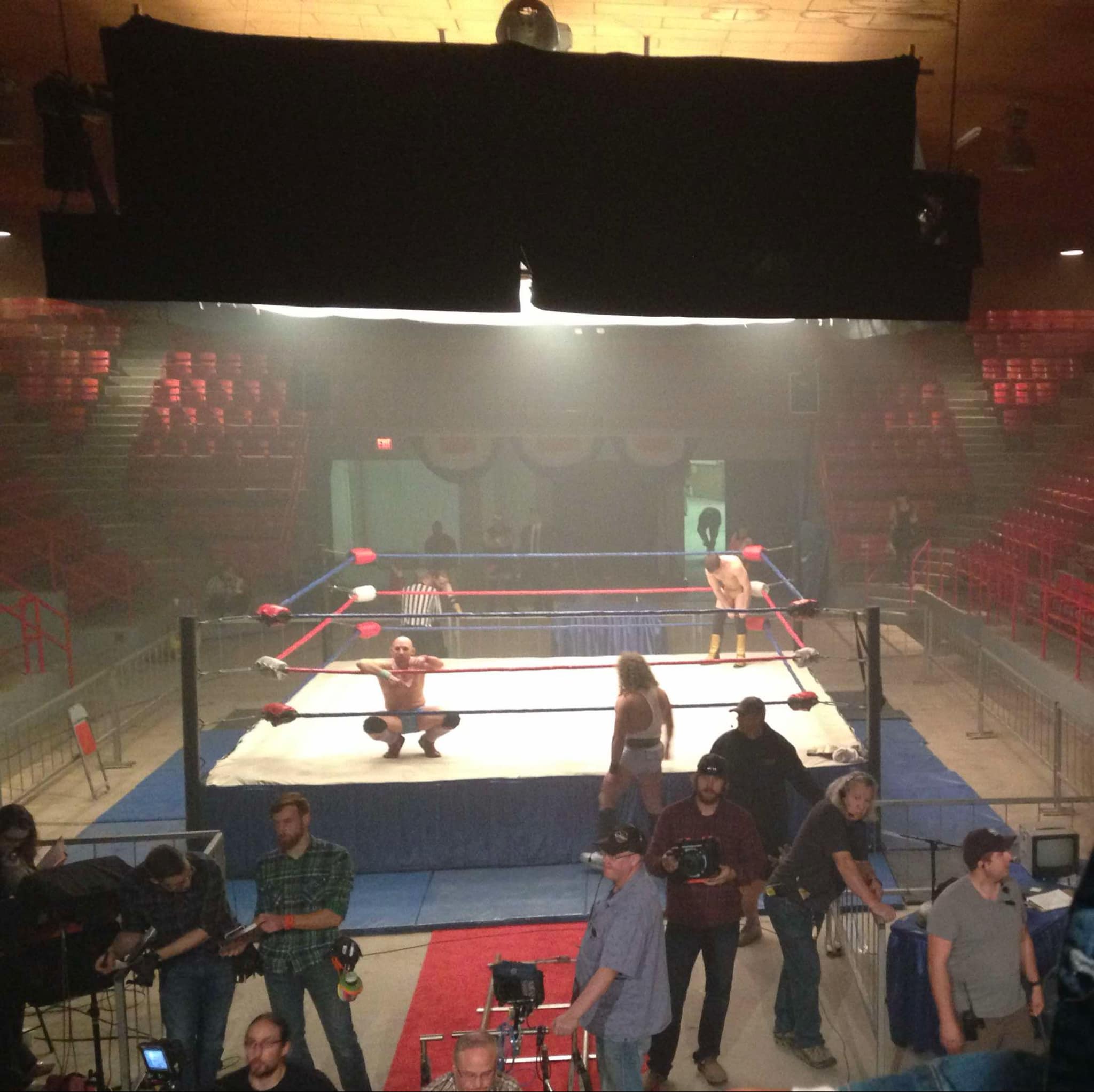
10 – The Swamp: If Those Walls Could Talk
Canadian Western Agribition is a legendary agricultural gathering every November in Regina. Thousands of people world-wide flock to REAL to show case their livestock in international competitions, take in some great entertainment, including a full complement of rodeo, a tradeshow, and more. Over 200,000 people attend each year.
The look of the building has changed over the years with the addition of the Viterra International Trade Centre and the removal of the old barns and the Agridome, which was the location for sales and shows, and the legendary Swamp.
It could be found under the stadium bleachers and was ‘the’ place to go during Agribition. A floor covered in peanuts, a musky smell, and memories to match. For 40 years it was the biggest party of CWA. With barely any room to move, bar stories galore, millions of memories, it was a gathering place for all.
After 42 years, the Agridome was removed to make way for the Viterra International Trade Centre. If those walls could have spoken…
These are just a few of the stories and little know things about REAL. While the look may have changed over the years, the stories and traditions won’t end, and will continue to bring us together.

